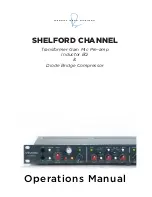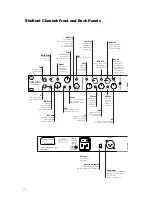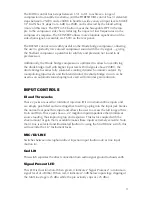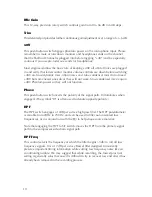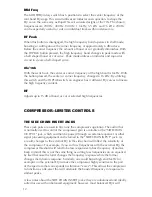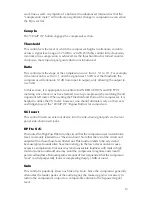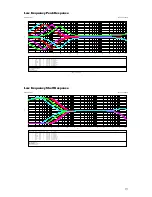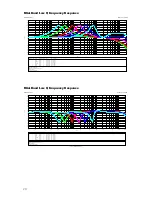
8
The “Best Of The Classics” EQ
The 3-band, custom-tapped inductor EQ on the Shelford Channel was inspired by
our favorite portions of Rupert’s vintage EQ designs. The low frequency band is
primarily based on the 1064 — renowned for its creamy, resonant bass. Unlike the
1064 however, the LF band on the Channel can be used as either a shelf or a peak
filter, adding punch, dimension, and immense control to your low end.
The Shelford Channel’s inductor midrange band is based on the legendary 1073
mid-band, which is ideal for sweetening vocals and instruments while bringing
them ever-so-slightly forward in a mix. Additionally, the mid band’s proportional
“Q” response makes it well-suited for de-emphasizing frequencies in a source.
The Channel’s high frequency band is a hybrid vintage/modern design, using
capacitor-based topologies to achieve richer tone with enhanced control. Just as
Rupert originally intended with his most prized classic designs, each EQ section
uses low-feedback, class-A electronics to prevent low-level artifacts and harshness
from detracting from the tonal shaping. The EQ circuit itself, however, is a
decidedly modern design using techniques and components that were simply not
available 40 years ago, and should not be considered a “clone.”
The Diode Bridge Compressor
Like the Inductor EQ and Transformer Gain microphone preamp, the Diode Bridge
Compressor in the Shelford Channel is based on the same topologies found in
Rupert’s vintage designs — such as the 2254 — but it expands on these early
designs by incorporating full-wave rectification and a slew of new control features.
While Rupert’s vintage diode bridge compressors have a uniquely punchy and
warm response, they were also quite limited by inflexible attack times, high noise
floor, & low headroom. With the Channel’s Diode Bridge Compressor, Rupert Neve
Designs is able to recapture the vibe-filled, “in your face” sound of those classics
with a new level of precision and flexibility, allowing the compressor to be fully
utilized on virtually any source. Where the VCA compressor found in the Portico
II Channel delivers unrivaled transparency, the Shelford Channel’s Diode Bridge
Design is all about making a statement with compression.
The compressor includes controls for TIMING, THRESHOLD, RATIO, BLEND,
MAKE UP GAIN, FAST (attack & release modifier), HPF to SC, PRE-EQ, BYPASS, SC
INSERT, and STEREO LINK for the new high-performance diode bridge.
TIMING is a six-position switch that affects both attack & release settings for Auto,
Fast, Medium Fast, Medium, Medium Slow, and Slow. The FAST button speeds
up the attack and release for every setting — highly useful when it becomes vital
to clamp down on transients. These settings provide a vast range of attack/release
combinations, all with easy auditioning and recall.

